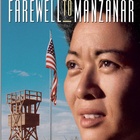Nearly seventy years have passed since the first busload of Japanese Americans arrived at Manzanar, forced from their coastal California homes to spend the duration of World War II behind barbed wire and beneath the gaze of armed soldiers perched in perimeter guard towers. The incarceration of 120,000 American citizens and residents based solely on their Japanese ancestry is a painful chapter in U.S. history. Even now, it’s a subject about which many don’t know, others don’t want to know, and yet, more than ever, everyone needs to know. That’s what makes the release of the film, Farewell to Manzanar, on DVD by the Japanese American National Museum so significant.
In 1976, NBC aired Farewell to Manzanar, directed by John Korty and based on a 1973 memoir by Jeanne Wakatsuki Houston and James D. Houston who also wrote the screenplay. Although VHS copies of the film were distributed to California schools and libraries a number of years ago, the film has never been nationally available to the general public on DVD until now. Made for television long before VCRs, TiVo, or the Internet, the film’s musical rights for duplication had never been obtained. Furthermore, NBC (now NBCUniversal or NBCU) did not believe it was commercially viable to purchase those rights.
Yet, the film was not forgotten. “When people talked about the film, they talked about it like it was something they may have dreamed about,” wrote Maria Kwong, the National Museum’s Director of Retail and Visitor Services. Her colleague, Alisa Lynch, had been so moved by seeing the film in 1976 that she decided to pursue a career as a park ranger, later becoming chief interpreter at Manzanar National Historic Site.
Frequent inquiries about the film at both the Museum Store and the Manzanar History Association Store prompted Kwong to take action. “Last year,” she explained, “we were determined to find a way for our two institutions to convince NBCU to let us produce the DVD for sale solely at our institutions. We planned to ask them to release it for the greater good!”
Although NBCU remained unswayed in their decision to produce the DVD themselves, Kwong was undaunted, entering into contract negotiations for a licensing agreement with the media giant that resulted in a five-year agreement. A hefty number of DVDs must be sold to maintain the license—daunting yet doable. Not only is the film of particular interest to JANM visitors and tourists to Manzanar and other World War II camp sites, but also to educators and students.
While the book Farewell to Manzanar—part of California’s public high school curriculum—tells the story of one family, the film distills the larger Japanese American experience into two hours. When writing the screenplay, Wakatsuki Houston said, “we had to decide what’s important.” Her family’s experience was enlarged to present a more complete picture of the ramifications of the incarceration. “Riots, the loyalty oath and the 442nd were not in the book but were in the film for educational purposes,” she said. Both the book and the movie serve as powerful vehicles for understanding issues of racism, civil rights, and legal rights.
The film deserves renewed viewership because discussions of immigration policy, racial profiling, religious intolerance, and discrimination continue to provoke dissension. “I think it’s wonderful that the film will be more widely available,” said Wakatsuki Houston. “Anything to spread the word.”
The limited number of movies on the Japanese American incarceration experience makes the DVD release of Farewell to Manzanar even more crucial. JANM’s Public Information Manager, Chris Komai writes, “it is significant that in the thirty-five years since Farewell to Manzanar was first shown, there really has not been another movie made that has dealt with this chapter of American history better. There have been many documentaries made about the war and camp in that same time period, but nothing like Farewell to Manzanar.
The film was and continues to be especially meaningful to the Japanese American community because, as Komai explained, “it is the first depiction of the forced removal and mass incarceration of Japanese Americans during WWII presented to the broader American audience.” The screenwriter, the cinematographer, all the major roles, and much of the crew for this major studio production were all Japanese Americans. “In fact,” continued Komai, “with Hiro Narita as cinematographer and Paul Chihara as the film’s score composer, it really was, thanks to director John Korty, a film based on a story about Japanese Americans, written by Japanese Americans, and performed by Japanese Americans. In 1976, that is saying something. It was, in many ways, ahead of its time.”
Timeliness is a central concern for this film. After bustling Japanese American communities were hollowed out and emptied of residents in 1942, how many years would it take before people were ready to examine injustice? About the same interval that author Jeanne Wakatsuki Houston needed before she felt ready to examine her own memories?
For many Japanese Americans released from the World War II camps, their experiences simply were not discussed. They suffered more than the loss of freedom and livelihood. Wakatsuki Houston believes that accusations of disloyalty were especially devastating because loyalty is such an essential part of the Japanese culture. “It was like it was a bad dream or there was some shame involved with it so you just didn’t refer to it,” she said. “It was totally suppressed.”
Not until Wakatsuki Houston was 38 years old did those suppressed memories begin to surface. Trying to answer her nephew’s questions about Manzanar, she recalled him saying, “You’re talking like being in a prison was nothing. How did you feel about it?” No one had asked her how she felt about the experience and she broke down in front of him, still traumatized by the past. Even writing a memoir intended just for her family proved to be an emotionally wrenching task. Wakatsuki Houston had never even talked to her husband, James D. Houston, about Manzanar. She remembered his reaction, “‘You mean, I’ve known you all these years and you’ve been carrying that around with you?’ He says, ‘My god, this is not something just for your family. This is a story that every American should know about.’” Together, Wakatsuki Houston and her husband wrote Farewell to Manzanar which was published in 1973.
Yet even thirty years after the end of World War II when the film version of Farewell to Manzanar aired, timing was at issue. “I doubt whether the broader American audience was ready to accept this story in 1976 and even our own Nikkei community was not comfortable with this film,” wrote Komai. “When we had a screening for some of our volunteers, I was amazed at how many of them had never seen this film.” Yet first-time viewers will not find a film that is outdated but instead, dated in the best sense of the word. Wakatsuki Houston ventures that the movie “feels like a real ‘50s film or even a ‘40s film. You get a real feel for the zeitgeist of the times.”
To mark the release of Farewell To Manzanar on DVD, available for the first time through the Museum Store, the Museum will screen the movie on Sunday, October 23 at 2:00 p.m. The event, sponsored by the California Civil Liberties Public Education Program, celebrates this film’s important contribution towards fulfilling the Museum’s mission, which is “to promote understanding and appreciation of America’s ethnic and cultural diversity by preserving, interpreting and sharing the experiences of Japanese Americans.”
Farewell to Manzanar, Komai concludes, “is one of those films that I would like more people to see once in their life. I think there are certain things that will stick with people and it will change the way a lot of people feel when they think of Japanese Americans and the war. Movies have that power.”
Watch clips from a video interview with Jeanne Wakatsuki Houston >>
* * *
Farewell to Manzanar screening
Japanese American National Museum
Sunday, October 23, 2011 • 2pm
Join special guests for a screening and Q&A.
$25 Members; $30 non-members, includes admission and a complimentary copy of the DVD. Purchase tickets >>
Order the DVD from the Museum Store >>
© 2011 Japanese American National Museum








